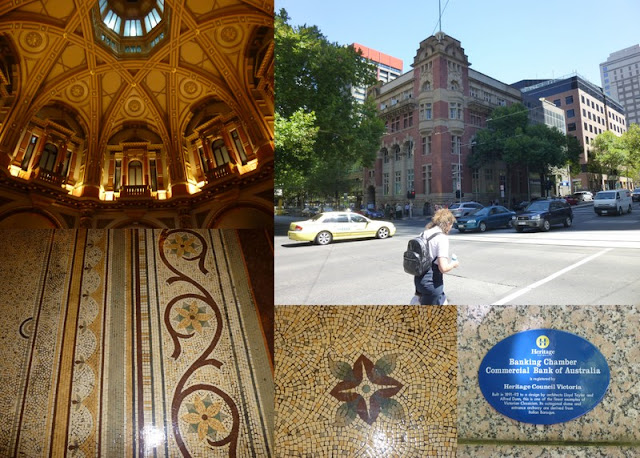February 8, 2013, in port Adelaide, Australia: Turner from the Tate.
We docked in the Outer Harbor, Port of Adelaide at 8:00am and took the ship's shuttle bus into the city center area (Rundle Mall). Escaping the shuttle bus, we walked to Victoria Square and the Central Market.

The Silversea Shuttle Bus, aka School Bus
"I tell you, some people go to school forever. Look how old this bunch is!"
Victoria Square, Adelaide's Center Point
From left, clockwise -- Central Post Office, Australian and Aboriginal Flags, and Three Rivers Fountain.
Central Market, Adelaide
A feast for all the senses - eyes, nose and stomach. Is the stomach a sense?
Leaving the market, we walked along King William Street, admiring the urban architecture of an uncongested city. Crossing through Rundle Mall, the main shopping district, we met the pigs.
Street Scenes and Architecture, Adelaide
Adelaide is a city where you would have to work at getting hit by a car.
The Pigs of Rundle Mall
It seems appropriate that statues of pigs should be at the Mall. (However, only the Aussies would put them there!)
Not wanting to return to the ship quite so early, we walked along North Terrace, where many public buildings and monuments are sited. Not to mention the Adelaide Casino! We stopped in the coffee shop of the South Australian Museum to get out of the sun and have a coffee before continuing on to the Art Gallery of South Australia. Serendipidously, the high point of our day in Adelaide occurred here: Viewing the "Turner from the Tate" exhibition, which included over 100 of J. M. W. Turner's paintings. It was the exhibition's opening day.
Museums and Monuments
From top left, clockwise: South Australian Museum, Migration Museum, Robert Burns Statue, Capt. Charles Sturt Plaque, ANZAC (WWI) South Australian National War Memorial.
The Art Gallery of South Australia
The person in the funny hat looking lost in front of the museum is who (hint E)?
Exhibition Ticket
Well worth every cent of the A$25 entrance fee, and you get this lovely ticket.
J.M.W. Turner - Peace -- Burial at Sea, 1842
One of the paintings in the exhibit. For more, go to artgallery.sa.gov.au/turner
After about two hours viewing the exhibition, we were "cultured out," and returned to Rundle Mall for a "lunch" consisting of an immense amount (est. 5,000 calories) of delicious gelato. Then, we waddled to the Silversea shuttle bus. Back on board, we had nice naps, disguised as reading our books, played team trivia, and watched the Silver Whisper depart for Albany in Western Australia.





















































